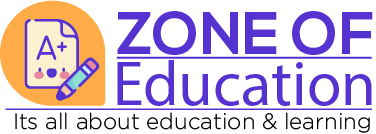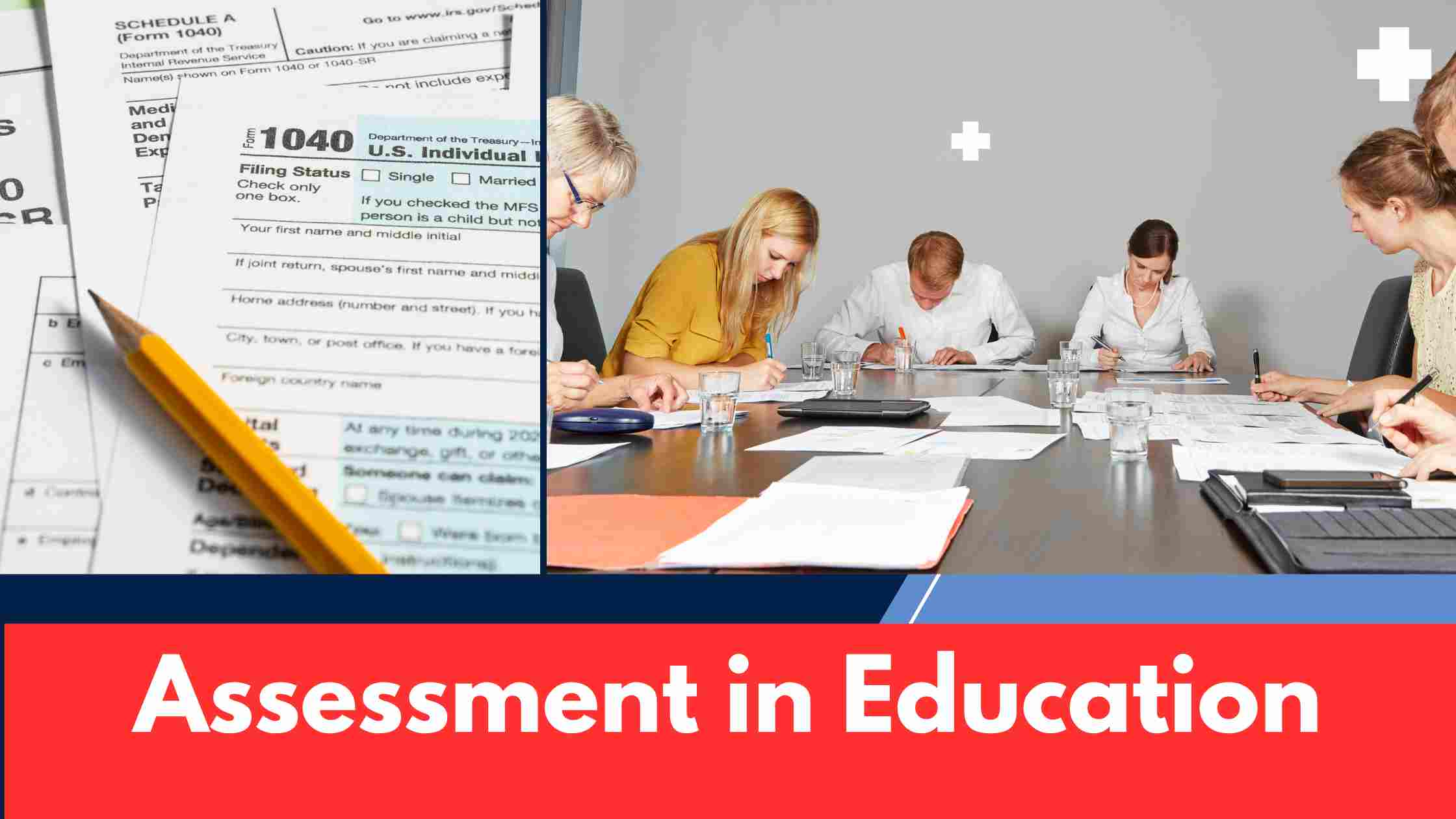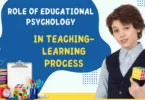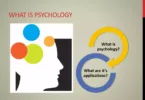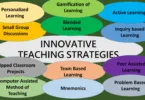Assessment in education is an important aspect of the learning process that seeks to evaluate the knowledge and skills acquired by students. It plays a fundamental role in determining the effectiveness of teaching methods and providing feedback to educators and learners. The main purpose of assessment is to measure students’ understanding and progress, identify areas for improvement, and promote continuous Learning. By assessing students’ performance, educators can make informed decisions regarding instructional strategies and tailor their teaching methods to meet individual needs.
Various types of assessments are used in education, including formative and summative assessments. Formative assessment is conducted throughout the learning process to monitor students’ progress and understanding. It provides immediate feedback to students and helps them identify their strengths and weaknesses. This type of assessment allows educators to adjust their teaching methods and provide additional support if needed. On the other hand, summative assessment is carried out at the end of a unit or course to evaluate students’ overall learning outcomes. It typically takes the form of exams, projects, or portfolios and is used to determine students’ proficiency and grade their performance.
Assessment in education serves as a valuable tool for measuring students’ knowledge and skill acquisition. It provides educators with crucial information to improve teaching methods and support students’ Learning. By incorporating both formative and summative assessments, educators can ensure a comprehensive evaluation of students’ progress and promote continuous improvement in the educational setting.

What Is Assessment?
Assessment involves gathering and analyzing data to evaluate knowledge, skills, and abilities. It serves multiple purposes: to measure learning outcomes, identify areas for improvement, and inform decision-making. Assessment provides feedback to learners and educators, enabling them to make informed choices and enhance learning experiences. Moreover, assessment is crucial in determining the effectiveness of educational programs and interventions. The importance of assessment lies in its ability to provide objective and reliable information that can guide instructional strategies, curriculum development, and educational policy. Effective assessment practices contribute to fostering a culture of continuous improvement in education.
Definition of Assessment
Now that we understand the importance of assessment in various fields let’s delve deeper into its definition and explore its fundamental aspects.
Assessment is a systematic process used to collect, analyze, and interpret information about an individual’s knowledge, skills, abilities, or characteristics. It involves gathering evidence through various methods to make informed judgments or decisions about an individual’s progress, performance, or potential. Through assessments, educators, employers, and professionals in various domains gain valuable insights that guide their decision-making processes.
To provide a visual representation of ideas, let’s take a look at the following table, which illustrates the key elements of assessment:
| Definition | Purpose |
|---|---|
| Assessment is the process of evaluating an individual’s knowledge, skills, abilities, or characteristics. | Assessment aims to measure learning outcomes, inform instructional planning, evaluate performance, and make informed decisions. |
It is essential to explore the different types and methods used in the assessment process to understand the intricacies of assessment. Here are three sub-lists that outline the main categories of assessment:
Purpose of Assessment
To fully understand the significance of assessment in education, it is crucial to explore its purpose. Assessment serves multiple purposes, enhancing the learning process and promoting student success.
- Evaluation of Learning: One of the primary purposes of assessment is to evaluate students’ learning progress and achievements. By assessing their knowledge and skills, educators can identify areas of strength and weakness, allowing them to tailor their teaching methods and provide targeted support to students who need it.
- Feedback and Improvement: Assessment provides valuable feedback to both students and educators. Through assessments, students receive feedback on their performance, enabling them to identify areas for improvement and set goals. Similarly, educators can use assessment data to evaluate their teaching strategies and make necessary adjustments to enhance student learning.
- Monitoring and Accountability: Assessment allows educators to monitor students’ progress and hold them accountable for their learning outcomes. By measuring students’ performance against predetermined standards, educators can identify if they are meeting the expected level of achievement. This monitoring aspect of assessment helps ensure that students are progressing academically and meeting the required learning objectives.
Importance of Assessment
Assessment is vital in the education system as it provides valuable information about students’ learning progress and helps educators make informed decisions. It is an essential tool that enables teachers to evaluate the effectiveness of their teaching methods and tailor their instruction to meet students’ needs. Moreover, assessment is crucial for students, as it allows them to gauge their understanding of the subject matter and identify areas where they need to improve.
To emphasize the significance of assessment, let’s take a closer look at its key benefits:
1. Enhancing Learning Outcomes: Assessment is a feedback mechanism that helps students identify their strengths and weaknesses. By understanding their areas of improvement, students can focus on mastering specific concepts or skills, ultimately leading to improved learning outcomes.
2. Providing Motivation: Assessment can be a powerful motivational tool. When students receive feedback on their progress, they are more likely to feel motivated to work harder and strive for better results. This motivation can foster a positive learning environment and encourage students to take ownership of their education.
3. Informing Instructional Practices: Assessment data provides valuable insights into the effectiveness of teaching methods and curriculum. By analyzing the results, educators can identify areas where students struggle or excel and adjust their instruction accordingly.
Types of Assessment
Assessment of Learning refers to evaluating a student’s knowledge and skills at the end of a learning period. It is typically used to measure and certify competence. Assessment as Learning focuses on students actively participating in the assessment process to develop their understanding and monitor their progress. Assessment for Learning involves using assessments to inform and guide teaching and learning strategies. Informal and formal assessments differ in their structure and administration. Internal assessments are conducted within the school or educational institution, while external organizations administer external assessments. Portfolio assessment involves collecting and evaluating a range of student work over time. Self-assessment empowers students to reflect on their Learning and set goals.
1. Assessment of Learning
Assessment of Learning refers to evaluating students’ knowledge and skills at the end of a specific period or course. It is often used to measure students’ achievement and summarize their learning outcomes. This type of assessment is typically conducted through tests, exams, and standardized assessments. Its main purpose is to determine the extent to which students have mastered the content and skills outlined in the curriculum.
2. Assessment as Learning
Assessment as Learning is an integral part of the learning process, where students actively engage in self-assessment and reflect on their Learning. It involves students taking ownership of their Learning and becoming aware of their strengths and areas for improvement. This type of assessment empowers students to monitor their progress and adjust their learning strategies to achieve their goals.
One effective way to implement Assessment as Learning is through self-assessment. This allows students to evaluate their work against specific criteria and identify areas where they must focus their efforts. Students develop metacognitive skills and gain a deeper understanding of their learning process through self-assessment.
Another method of Assessment as Learning is the use of rubric-based assessment. Rubrics provide clear expectations and criteria for success, allowing students to assess their work and understand what they need to do to improve. Rubrics also provide teachers with a consistent and objective way to assess student performance.
Assessment as Learning can also be facilitated through project-based assessment. In this approach, students are allowed to demonstrate their understanding and skills through the completion of a project. This allows for authentic and meaningful assessment, as students can apply their knowledge and skills in a real-world context.
3. Assessment for Learning
Assessment for Learning is an approach to assessment that focuses on using assessment as a tool for Learning and improvement. Unlike Assessment of Learning, which measures the achievement of learning outcomes at the end of a unit or course, Assessment of Learning takes place throughout the learning process. It provides students with ongoing feedback and opportunities for self-reflection, allowing them to engage in learning.
One of the key principles of Assessment for Learning is using formative assessment. Formative assessment involves gathering information about students’ understanding and progress during instruction and using that information to adjust teaching and learning strategies. This helps to ensure that students are on track and that any misconceptions or gaps in understanding can be addressed on time.
Teachers can use questioning techniques, peer and self-assessment, rubrics, and checklists to implement Assessment for Learning effectively. These strategies help students become more aware of their Learning and take ownership of their progress.
Incorporating Assessment for Learning into the classroom can have numerous benefits. It enhances students’ motivation and engagement, promotes higher-order thinking skills, and fosters a growth mindset.
Formative Assessment is a subtype of Assessment For Learning:
- Provides ongoing feedback to monitor learning progress.
- Helps identify areas where additional support is needed.
Besides the three basic types of Assessment, the following are also assessments that make a way to perform assessment and to engage the students also provide a clear understanding of the different types of assessment; a table has been created below:
| Assessment Type | Description |
|---|---|
| Informal Assessment | Informal assessments are typically conducted in the classroom and do not contribute to the final grade. These assessments include observations, discussions, and questioning to gauge students’ understanding. |
| Formal Assessment | Formal assessments are structured and graded assessments that contribute to students’ final grades. Examples include exams, quizzes, and written assignments. |
| Internal Assessment | The teachers or instructors conduct internal assessments within the school or educational institution and evaluate them. These assessments can include class presentations, projects, and assignments. |
| External Assessment | External bodies or organizations outside the school or educational institution conduct external assessments. |
Informal and Formal Assessment
Assessment comes in various forms, each serving a specific purpose in the educational process. Two main categories of assessment are informal and formal assessment.
Informal assessment refers to the use of non-standardized measures to evaluate student learning. It is often conducted more casually and spontaneously to gain insight into student progress. Examples of informal assessment methods include classroom observations, class discussions, and teacher-student conferences. Informal assessments provide valuable real-time feedback and can be useful in identifying areas where students may need additional support or instruction.
On the other hand, formal assessment utilizes standardized measures to evaluate student learning. These assessments are typically more structured and systematic, with predetermined questions or tasks. Examples of formal assessments include standardized tests, quizzes, and exams. Formal assessments provide a more objective and standardized way of measuring student achievement and are often used for grading purposes or to compare student performance across different schools or districts.
To further illustrate the differences between informal and formal assessment, the following table provides a comparison:
| Informal Assessment | Formal Assessment |
|---|---|
| Less structured and spontaneous | More structured and systematic |
| Focuses on gaining insights into student progress | Measures student achievement objectively |
| Examples: |
Internal and External Assessment
In education, assessments play a crucial role in evaluating the progress and understanding of students. They provide educators with valuable insights into students’ knowledge and skills. One important aspect of assessments is distinguishing between internal and external assessments.
Internal assessments are conducted within the classroom and are designed to gauge students’ understanding of the subject matter. The teacher typically carries out these assessments and can take various forms, such as quizzes, tests, or presentations. They provide immediate feedback to students and teachers and enable timely interventions to address gaps in Learning. Internal assessments help teachers monitor student progress and tailor their instruction accordingly.
On the other hand, external assessments are standardized tests administered at a regional, national, or international level. These assessments aim to measure students’ knowledge and skills against a predetermined set of criteria. Examples of external assessments include state-administered standardized tests and international exams like the Programme for International Student Assessment (PISA). External assessments provide a standardized measure of students’ performance, allowing for comparisons across schools, districts, and even countries.
To further understand the differences between internal and external assessments, refer to the table below:
Project-Based Assessment
Project-based assessment is a type of assessment that involves students completing a significant project or task to demonstrate their understanding of a particular subject or skill. This assessment form focuses on real-world applications and allows students to showcase their abilities practically and meaningfully.
One of the key benefits of project-based assessment is its ability to promote critical thinking and problem-solving skills. By working on a project, students must analyze information, evaluate options, and make decisions. This process helps them develop higher-order thinking skills essential for success in the modern workforce.
Moreover, project-based assessment also encourages collaboration and teamwork. Many projects require students to work together in groups, allowing them to learn from each other, share ideas, and develop their interpersonal skills. This enhances their ability to work effectively in a team and prepares them for future collaborative work environments.
Additionally, project-based assessment allows for creativity and individuality. Students can choose their topics, design projects, and explore their interests. This autonomy increases engagement and motivation and allows students to showcase their unique talents and abilities.
In conclusion, project-based assessment is a valuable tool in the educational setting. It promotes critical thinking, collaboration, and creativity while providing students with an opportunity to apply their knowledge and skills in a meaningful way.
Assessment plays a crucial role in education, as it helps gauge the level of knowledge and skills that students have acquired. Educators can use various types of assessments to measure different aspects of student learning. These assessments can be categorized into assessment of Learning, assessment as Learning, and assessment for Learning.
Assessment of Learning refers to the traditional form of assessment used to evaluate students’ achievement and assign grades. This type of assessment is often conducted through tests, exams, or quizzes. It summarizes what students have learned at the end of a unit or course.
Assessment as Learning focuses on the process of learning itself. It involves students actively participating in their Learning by reflecting on their progress and making connections between new and previous knowledge. This type of assessment encourages students to become self-regulated learners and develop metacognitive skills.
Assessment for Learning provides ongoing feedback to students during the learning process. It helps identify students’ strengths and areas for improvement, allowing them to adjust and progress in their learning journey.
In addition to these three types, assessments can be classified as informal or formal, depending on their structure and purpose.
Assessment of Learning is a crucial aspect of education that allows educators to measure students’ understanding and knowledge acquisition. It is commonly used to determine whether the learning objectives of a specific lesson or course have been met. This assessment typically occurs at the end of a unit or course and is often evaluated through tests, exams, or essays.
On the other hand, assessment as Learning involves students actively participating in the assessment process. It empowers learners to self-reflect, set goals, and monitor their progress. By engaging in self-assessment, students develop a deeper understanding of their strengths and areas for improvement. They also gain valuable skills in self-regulation and self-monitoring, which can contribute to their overall growth and success.
Assessment for Learning aims to support and enhance student learning throughout the instructional process. It involves ongoing feedback and constructive teacher guidance to help students identify their strengths and weaknesses. This type of assessment provides actionable suggestions for improvement and allows for adjustments in teaching strategies to meet individual student needs better.
Assessments can be informal or formal, depending on their purpose and structure. Informal assessments, such as classroom observations or class discussions, provide immediate feedback and are often used to inform instructional decisions.
Assessment of Learning is one of the most commonly used types of assessment in education. It is often conducted at the end of a unit or course to determine how students have achieved the desired learning outcomes. This type of assessment is typically formal and standardized, involving tests, exams, and assignments. The results of these assessments are used to assign grades and evaluate students’ performance.
On the other hand, Assessment as Learning is an approach that involves students actively assessing their Learning. It promotes metacognition and self-regulation by encouraging students to reflect on their learning process and set goals for improvement. This type of assessment can take various forms, such as self-assessment checklists, learning journals, and peer feedback.
Assessment for Learning is another important type of assessment that focuses on providing feedback and guiding students’ Learning. It is conducted throughout the learning process to monitor students’ progress and provide timely interventions. This type of assessment includes formative assessments, such as quizzes, classroom discussions, and informal observations. The feedback received from these assessments helps students identify their strengths and weaknesses and allows teachers to adjust their instruction accordingly.
Summary
Assessment in education is a crucial aspect of the learning process as it allows educators to gather information about students’ knowledge, skills, and abilities. Assessment refers to the methods and tools used to measure and evaluate students’ performance and understanding of the subject matter. It provides teachers with valuable insight into the effectiveness of their teaching strategies and helps them make informed decisions about instructional planning and student support.
Educators can employ various types of assessments to gauge student learning. Formative assessment is used during Learning to provide immediate feedback and identify areas where students may require additional support. This type of assessment encourages active Learning and allows teachers to adjust their teaching strategies accordingly. Summative assessment, on the other hand, is used to evaluate students’ overall performance at the end of a unit, course, or academic year. It provides a comprehensive measure of students’ achievements and helps determine their readiness for the next level of education.
In conclusion, assessment plays a crucial role in education by providing educators with valuable information about students’ learning progress. Teachers can comprehensively understand students’ strengths and weaknesses by employing various assessment methods, allowing them to tailor their instruction and provide targeted support. Furthermore, assessment promotes student engagement and motivation by providing timely feedback and opportunities for improvement. Educators need to use assessment effectively to ensure that all students have the opportunity to reach their full potential and succeed academically.
